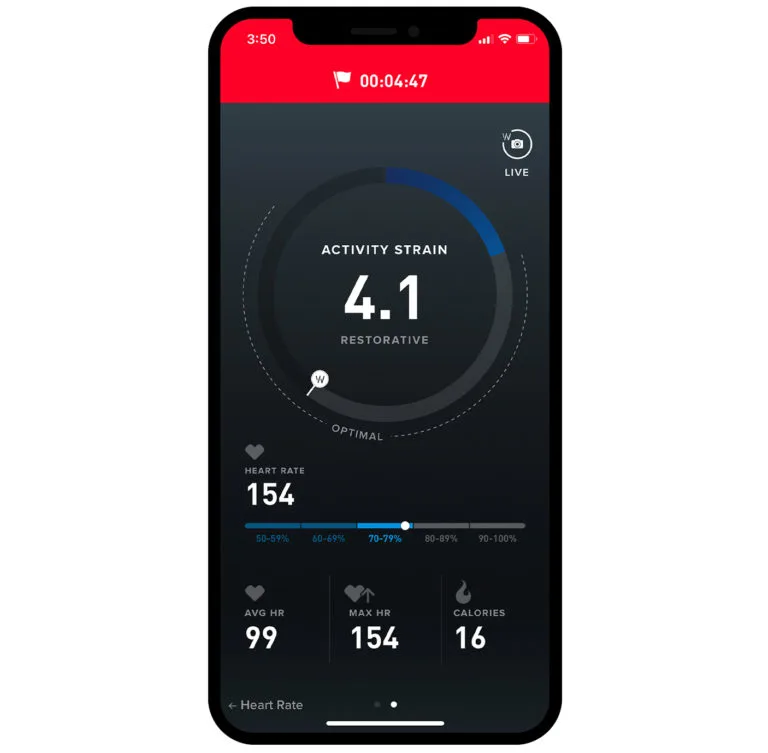Topics
- Article
- Heart Rate
- Training & Exercise
What is My Target Heart Rate Zone and How Do I Measure It?

Get the most out of every workout by knowing your target heart rate zone.
Monitoring your heart rate while working out can help you maintain the right fitness zone to get the most out of your routine. Learn how to target heart rate zones and how WHOOP can help you keep track of your heart rate.
What Does Target Heart Rate Zone Mean?
Your target heart rate zone reflects how fast your heart should be beating while you exercise. Training based on your heart rate zone helps you identify exactly how hard you want to push yourself so you can get the maximum payoff out of every workout. Your target heart rate is different depending on the type of activity you’re doing. For example, your heart rate while swimming will likely be different from when you’re lifting heavy weights.
How to Find Your Target Heart Rate
The first step to finding your target heart rate zone is to figure out your maximum heart rate. One commonly used equation for finding max heart rate is to subtract your age from 220. For example, a 30-year-old has a maximum heart rate of 190 beats per minute (bmp). But, this formula does not consider variables like gender and genetics. More detailed formulas include the Tanaka (208 – 0.7 x age) or the Gulati (206 – 0.88 x age, for women only), but they also make broad generalizations. Additionally, other factors like temperature, altitude, hydration, and even time of day can affect your heart rate. Each of us will have a different maximum heart rate, so a better solution is to use a wrist-worn heart rate monitor like WHOOP that will determine your personal max heart rate.
Heart Rate Training Zones

There are benefits to training in each zone, but varying your workouts to train in every zone offers the most benefits.
Training heart rate zones are usually between 50% and 90% of your max heart rate--from very light warmups to hard anaerobic workouts. Anaerobic heart rate zone is a heart rate that is 80%-90% of your max heart rate. Generally, you will target this zone in short, intense bursts of action of 90-120 seconds. Anaerobic exercises use immediately available energy including glucose to fuel the body, which causes muscles to build up lactic acid. In this zone, you become out of breath quickly as your body tries to get other sources of fuel. This zone is useful in activities that require power, like high intensity interval training or free weights workouts. Aerobic heart rate zone is from 70%-80% of your max heart rate, which you reach at moderate to vigorous activity such as running, rowing or using an elliptical machine. Activities that target the aerobic zone burn fat, carbohydrates and oxygen for a steady stream of energy. Your breath quickens but you don’t feel out of breath, and you can still carry on a conversation. Ideally you should be able to maintain this zone for 40 minutes or more. Fat burning zone overlaps the aerobic zone, at 60%-80% of your max heart rate. Lower intensity workouts burn a higher percentage of fat compared to carbs than more vigorous efforts do. It’s strenuous enough exercise to burn fuel, but not too strenuous to burn carbs instead of fat. Endurance athletes often train in this zone and use it in competition to conserve energy for a burst of speed at the finish line. You can also work out for much longer durations in this zone--you’ll begin to sweat but your breath should be steady. However, if you’re looking to lose weight, training in all the zones and increasing your intensity is likely to work better than focusing solely on the fat burning zone. Warm up, cool down and active recovery zone is a heart rate between 50%-60% of your max heart rate that allows you to gradually warm up to your training, return to a restful state post-workout, or recover from a previous day’s activity. Walking, jogging and yoga can all target this heart rate zone.
Benefits of Targeting Heart Rate Zones
A training plan that includes aerobic, anaerobic and fat burning sessions will enable you to gain lean muscle mass and burn fat more quickly than just one or the other. Monitoring your heart rate while working out can help you avoid training too hard by knowing exactly what your heart rate is. It may also push you to train harder as you discover that the workouts you’ve done before are less effective at increasing your heartbeat. Additionally, you can moderate your training days to take in factors like heat and humidity that will affect your exertion levels. On rest days you can target the active recovery zone to alleviate sore muscles.
WHOOP Helps You Maintain Your Target Heart Rate Zone
WHOOP measures your heart rate 24/7 and quantifies the strain your body takes on each day. Every morning, the recovery metric tells you how prepared your body is to take on strain. You can monitor your heart rate during activities using Strain Target. Once you’ve set your goal, it shows your heart rate (and percentage of max heart rate) in real time so you’re better able to maintain your intended heart rate zone. It also shows how your strain begins to build and lets you know when you’ve hit the desired amount.
